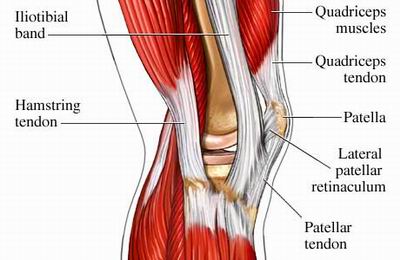Your body is a marvel of ingenuity.
Every day worn out or damaged cells and tissues are repaired naturally and automatically, no doctors, medications or exercise required.
Even an injury as serious as a broken bone should be fully or mostly healed in 3 months. If an injury fails to heal in 3 months, we call it a chronic injury.
Chronic injuries are costly. Not just in medical costs, but personally, as they affect every part of the patient’s life.
People with chronic pain usually have a diagnosis which describe the injured tissues, but most diagnoses fail to identify the reason behind the failure to heal.
Aside from painkillers, the standard medical approach is pain relief, rest or exercise. None of these restore the normal healing response.
Even with access to the best in modern medical care, elite athletes like Tiger Woods and Michael Owen end up with multiple surgeries and career-ending injuries because nobody identified the reason why their body couldn’t heal itself.
Most musculoskeletal injuries are joint injuries. A joint is two bones, joined by ligaments and controlled by muscles.

We injure joints when our muscles don’t react with enough speed and force to counteract an incoming force. Muscles are supposed to resist those forces but if they can’t the joint is prone to injury and failure to heal.
Muscles can become inhibited. Inhibition is where the nervous system “switches off” various muscles.
Inhibition is necessary for normal movement. When one muscle is active, its opposite is toned down slightly (but not completely) so that both are pulling, just not by the same amount. If both muscles pulled the same there would be no movement. If one pulled without the other, the joint would dislocate.
It’s easy to see how important this is for unstable and flat joints like the shoulder or the knee, but it’s important for all joints.
If you step on a nail, your hamstring muscles will be facilitated (receiving increased stimulation from the spinal cord). In that instant, your quadriceps are inhibited by an equal amount. If you never took the nail out, your quadriceps would continue to be inhibited and therefore weak, yet both muscles would feel normal. When the nail is removed, the tone of both muscles returns to normal.
What if you never take the nail out? What if the nail doesn’t actually hurt?
The point is that our skin is very sensitive; so sensitive it can feel one hair move, and our nervous system is very sensitive to any irritation.
The irritation doesn’t have to be painful, tickling will also activate some muscles and inhibit their antagonists. What happens to your body when there is a constant source of irritation, or stimuli, such as from a metal piercing or a filling?
If you put a piercing through skin around your belly button, it will activate your abdominals and inhibit your spinal extensors, the ones that hold you upright. You will feel perfectly normal until the next time you have to lift something heavy, when you may well sprain the joints of your low back, because your muscles are inhibited by the stimuli from your piercing. Even if you don’t sprain your back lifting something, your muscles being continually and abnormally inhibited can give you low back pain. Unless you take the belly piercing out, your low back pain might never go away.
Accurate and thorough muscle testing is the key to tracking down the cause of muscle inhibition. To learn more about this, the Association of Certified Afferentologists offers a free course as an introduction for all health professionals to the principles of testing for muscle tone and ascertaining the cause of muscle inhibition. Click here to learn more.
